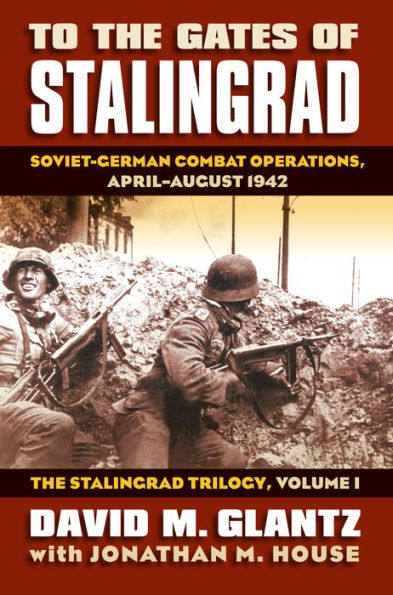Table of Contents
List of Maps, Tables, and Illustrations
Preface
Prologue: Along the Sukhaia Vereika River, 23 July 1942
1. The Wehrmacht
-Rebuilding the Wehrmacht -Satellite Armies
-The Strategic Picture
-Plan Fall Blau
-Axis Force Dispositions
-German Commanders
-The German Soldier
2. The Red Army
-Rebuilding the Red Army -The Strategic Debate
-The Khar’kov Plan
-Force Dispositions
-Red Army leadership
-The Soviet Soldier
3. Preliminaries, May-June 1942
-Operation Bustard Hunt [Trappenjagt]: The Battle for Kerch’-Planning the Second Battle of Khar’kov
-Disaster on the Northern Donets, 12-29 May
-Rival Assessments, June 1942
-Sevastopol’, 7-30 June
-Wilhelm, 10-15 June
-Operation Fridericus, 22-25 June
-The Reichel Affair
-On the Eve
4. Punch and Counterpunch, Blau I, 28 June-12 July 1942
-Area of Operations -Penetration and Encirclement, 28 June-3 July
-The German Advance to Voronezh, 4-6 July
-5th Tank Army’s Counterstroke, 6-12 July
-Hitler, Bock, and Blau II (Operation Clausewitz)
-Conclusions
5. Blau II, 9-24 July 1942
-Area of Operations -Blau II: The Battle for the Donbas, 9-17 July
-The Formation of Stalingrad Front
-Hitler Alters Course
-The Advance to the Don: The Millerovo Encirclement and the Battle for Rostov, 17-24 July
-Hitler’s Directive No. 45
-Conclusions
6. The German Advance into the Great Bend of the Don, 23-31 July 1942
-Area of Operations
-Sixth Army’s Advance to the Don, 17-25 July
-Stalingrad Front’s Counterstroke, 26-31 July
-The Orel and Voronezh Axes, 20-26 July
-Not a Step Back!
-Conclusions
7. Endgame in the Great Bend of the Don, 1-19 August 1942
-Hitler Alters Course -Fourth Panzer Army’s Advance to Abganerovo, 31 July-14 August
-Sixth Army’s Advance to Kalach, 1-11 August
-Organizing Stalingrad’s Defenses
-Sixth Army’s Advance into the Northeast Corner of the Great Bend,
15-19 August
-Conclusions
8. The German Advance to the Volga River, 20 August-2 September 1942
-Army Group B’s Offensive Plan -Stalingrad Front’s Plans
-Sixth Army’s Assault and Advance to the Volga, 21-23 August
-The Struggle for the Volga Corridor: The Soviet Counterstrokes at Kotluban’ and Orlovka, 23-29 August
-62nd Army’s Struggle, 23-29 August
-Fourth Panzer Army’s Advance, 17 August-2 September
-The Situation in Stalingrad
-The Sideshows at Serafi movich and Kletskaia, 21-28 August
-Conclusions
9. The Struggle on the Flanks, 25 July-11 September 1942
-Operation Edelweiss, Army Group A’s Advance into the CaucasusOpposing Forces
-The Initial Advance, 25-31 July
-Command Decisions and Opposing Forces
-Army Group A’s Exploitation to Stavropol’, Maikop, and Krasnodar,1-15 August
-The Initial Exploitation, 1-5 August
-The Soviet Reaction
-The Maikop Operation, 7-11 August
-The Krasnodar and Kuban’ Operations, 12-15 August
-Army Group A’s Advance to the Caucasus Mountains,
16 August-11 September
-The Mozdok Operation, 16-31 August
-Reorganization of Soviet Defenses
-The Novorossiisk and Taman’ Operations, 19 August-11 September
-The Battle for the Caucasus Mountain Passes, 16 August-September
-The Northern Flank
-Voronezh Dj Vu
-The Struggle for the Rzhev Salient, 30 July-23 August
-The Zhizdra River Operation, 23-29 August
-The Battle for the Demiansk Pocket, August 1942
-The Flank Battles: An Assessment
10. Conclusions
Appendix: The Experiences of the Commanders of Tank Armies and Tank Corps assigned to Briansk, Southwestern, Southern, and Crimean Front and the Stavka Reserve from 1 May to 1 July 1942 and Stalingrad Front on 1 August 1942
Notes
Selected Bibliography
Index



